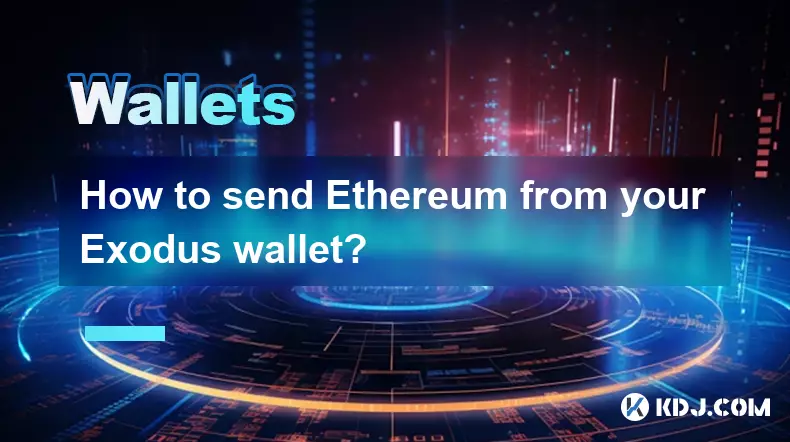-
 bitcoin
bitcoin $117366.968408 USD
0.60% -
 ethereum
ethereum $4611.537173 USD
-0.02% -
 xrp
xrp $3.089373 USD
0.06% -
 tether
tether $1.000286 USD
-0.03% -
 bnb
bnb $986.505381 USD
-0.03% -
 solana
solana $247.629906 USD
0.68% -
 usd-coin
usd-coin $0.999771 USD
-0.03% -
 dogecoin
dogecoin $0.281380 USD
-0.26% -
 cardano
cardano $0.931695 USD
1.71% -
 tron
tron $0.352059 USD
2.40% -
 hyperliquid
hyperliquid $58.226337 USD
-0.94% -
 chainlink
chainlink $24.805082 USD
3.27% -
 avalanche
avalanche $35.625687 USD
10.55% -
 ethena-usde
ethena-usde $1.000922 USD
-0.02% -
 sui
sui $3.883984 USD
2.13%
How to check if your Ledger device is genuine?
Always buy a genuine Ledger from official sources to ensure your crypto remains secure—counterfeit devices can steal your keys and compromise your assets.
Sep 15, 2025 at 11:18 am

Why Authenticity of Your Ledger Device Matters
1. A genuine Ledger hardware wallet ensures that your private keys remain secure and under your control. Counterfeit devices may come preloaded with malicious firmware designed to steal cryptocurrency assets. These fake units are often sold through unauthorized vendors or third-party marketplaces where oversight is minimal.
2. Using an authentic Ledger protects against supply chain tampering. Ledger implements a secure manufacturing and packaging process, including tamper-evident seals and cryptographic verification during setup. When users bypass official channels, they risk receiving devices that have been intercepted and modified before reaching them.
3. Genuine devices are built with a secure element chip, a specialized hardware component resistant to physical and software attacks. Counterfeits typically lack this chip or use inferior alternatives, drastically reducing the level of protection for stored crypto assets.
4. Firmware updates from Ledger are cryptographically signed. Only original devices can verify and install these updates safely. Fake devices may block updates or accept unauthorized versions, leaving them vulnerable to known exploits.
Steps to Verify Your Ledger’s Authenticity
1. Purchase only from Ledger’s official website or authorized resellers. Check the list of verified partners directly on Ledger’s site. Avoid marketplaces like eBay, Amazon, or social media sellers, as these are common sources of counterfeit units.
2. Inspect the packaging carefully. Genuine Ledger products come in sealed boxes with a holographic sticker. If the seal is broken or missing, the device may have been compromised. The box should include a QR code that links to Ledger’s verification page.
3. Upon first setup, the device will prompt you to verify the integrity of the firmware. This process involves comparing a cryptographic hash displayed on the device screen with the one provided on Ledger’s official site. Mismatched hashes indicate a tampered or fake device.
4. Confirm the device model number and serial number. These can be cross-referenced with Ledger’s support portal. The serial number is printed on the back of the device and inside the packaging. Discrepancies suggest the unit is not genuine.
5. Use Ledger Live to manage your device. During setup, Ledger Live performs backend checks to confirm the device’s authenticity. If any red flags are detected, the software will alert you before proceeding.
Red Flags Indicating a Counterfeit Ledger
1. The device powers on with pre-existing accounts or recovery phrases. Genuine Ledgers are initialized by the user during setup. Any pre-filled data is a major warning sign.
2. The screen displays incorrect or inconsistent text during setup. Counterfeit firmware often contains translation errors, misspellings, or unfamiliar menu options not present in official versions.
3. The device requests a recovery phrase during initial setup. Authentic Ledgers generate the recovery phrase only when creating a new wallet, never ask for one upfront.
4. The build quality feels cheap—lightweight plastic, misaligned buttons, or blurry logos. Genuine devices are constructed with durable materials and precise engineering.
5. The price is significantly lower than the official retail cost. If a deal seems too good to be true, it likely involves a counterfeit or stolen unit.
Firmware and Software Verification Process
1. Always download Ledger Live from the official website. Third-party installers may bundle malware or fake interfaces designed to mimic the real application.
2. During device setup, Ledger uses a process called “secure boot” to ensure only signed firmware runs on the device. Users can verify this by checking the digital signature shown on the screen against Ledger’s public keys available in their GitHub repository.
3. Regularly check for firmware updates within Ledger Live. Updated firmware patches security vulnerabilities and enhances compatibility with new cryptocurrencies. Skipping updates increases exposure to exploits.
4. Enable the “Auto-lock” and “Passphrase” features to add layers of protection. These settings are only reliable when used on a verified genuine device.
Common Questions About Ledger Authenticity
How can I check the serial number of my Ledger?The serial number is located on the back of the device and inside the packaging. You can enter it on Ledger’s support site under “Verify Product” to confirm authenticity.
What should I do if my Ledger fails the firmware verification?Stop using the device immediately. Do not enter any recovery phrase or private keys. Contact Ledger support with photos of the packaging and device for further guidance.
Can a counterfeit Ledger still sync with Ledger Live?Some advanced fakes may connect to Ledger Live, but they will fail cryptographic checks during setup. Ledger Live may display warnings or refuse to proceed if the device is not genuine.
Is it safe to buy a used Ledger from a trusted individual?Even secondhand devices from known contacts carry risk. There is no way to fully verify if the device was previously compromised. Resetting it may not remove deeply embedded malware. Purchase from official sources whenever possible.
Disclaimer:info@kdj.com
The information provided is not trading advice. kdj.com does not assume any responsibility for any investments made based on the information provided in this article. Cryptocurrencies are highly volatile and it is highly recommended that you invest with caution after thorough research!
If you believe that the content used on this website infringes your copyright, please contact us immediately (info@kdj.com) and we will delete it promptly.
- Coinbase & DeFi Lending: A New Era with Morpho Integration?
- 2025-09-19 16:25:14
- Unlock Better Prices & Seamless DeFi Trading with Cross-Chain Swaps
- 2025-09-19 16:25:14
- MoonBull: Riding the Meme Coin Wave with the Hottest Crypto Presale
- 2025-09-19 16:30:01
- Bitcoin's Bull Run: ETF Inflows and Price Predictions Heat Up!
- 2025-09-19 16:30:01
- Dogecoin Price Move: Analysts Spot Potential Rally Amidst Altcoin Weakness
- 2025-09-19 16:30:01
- Riding the AI Crypto Wave: Lyno AI Presale, Arbitrage, and the Market's Next Move
- 2025-09-19 16:30:12
Related knowledge

How to check your crypto portfolio performance in Exodus?
Sep 14,2025 at 08:36am
Accessing Your Portfolio Overview in Exodus1. Launch the Exodus application on your desktop or mobile device and enter your password to unlock your wa...

How to sell crypto from your Exodus wallet?
Sep 13,2025 at 12:01pm
Selling Crypto from Your Exodus WalletExodus is a popular non-custodial wallet that supports a wide range of cryptocurrencies. While it doesn’t allow ...

Can I use a Ledger Nano X with the Exodus wallet?
Sep 16,2025 at 04:36am
No, you cannot use a Ledger Nano X directly with the Exodus wallet. While both are popular tools in the cryptocurrency space, they are not compatible ...

How to back up your Exodus wallet?
Sep 11,2025 at 04:19pm
Understanding Exodus Wallet Backup Basics1. Exodus is a software wallet that allows users to store, manage, and exchange various cryptocurrencies dire...

How to send Ethereum from your Exodus wallet?
Sep 16,2025 at 11:36am
Preparing Your Exodus Wallet for Ethereum Transfer1. Ensure your Exodus wallet is updated to the latest version available on the official website or a...

How to add the Polygon network to Exodus?
Sep 18,2025 at 08:36am
Understanding Polygon and Its Integration with Exodus1. Polygon is a Layer 2 scaling solution built on Ethereum, designed to enhance transaction speed...

How to check your crypto portfolio performance in Exodus?
Sep 14,2025 at 08:36am
Accessing Your Portfolio Overview in Exodus1. Launch the Exodus application on your desktop or mobile device and enter your password to unlock your wa...

How to sell crypto from your Exodus wallet?
Sep 13,2025 at 12:01pm
Selling Crypto from Your Exodus WalletExodus is a popular non-custodial wallet that supports a wide range of cryptocurrencies. While it doesn’t allow ...

Can I use a Ledger Nano X with the Exodus wallet?
Sep 16,2025 at 04:36am
No, you cannot use a Ledger Nano X directly with the Exodus wallet. While both are popular tools in the cryptocurrency space, they are not compatible ...

How to back up your Exodus wallet?
Sep 11,2025 at 04:19pm
Understanding Exodus Wallet Backup Basics1. Exodus is a software wallet that allows users to store, manage, and exchange various cryptocurrencies dire...

How to send Ethereum from your Exodus wallet?
Sep 16,2025 at 11:36am
Preparing Your Exodus Wallet for Ethereum Transfer1. Ensure your Exodus wallet is updated to the latest version available on the official website or a...

How to add the Polygon network to Exodus?
Sep 18,2025 at 08:36am
Understanding Polygon and Its Integration with Exodus1. Polygon is a Layer 2 scaling solution built on Ethereum, designed to enhance transaction speed...
See all articles








































































